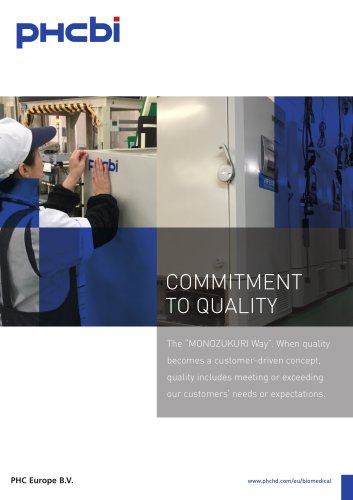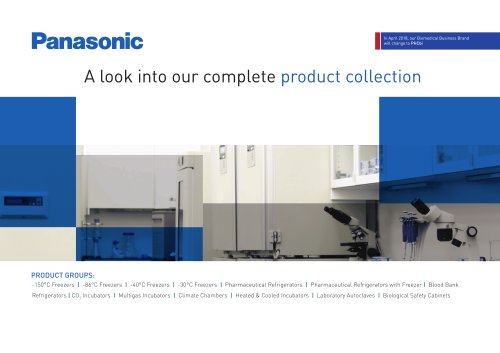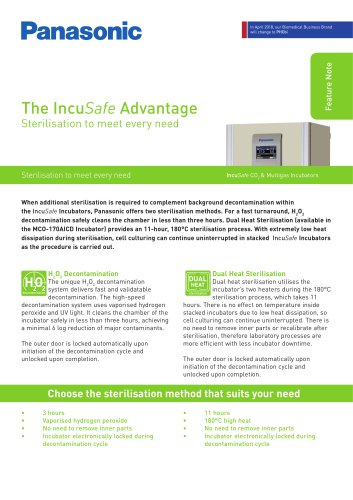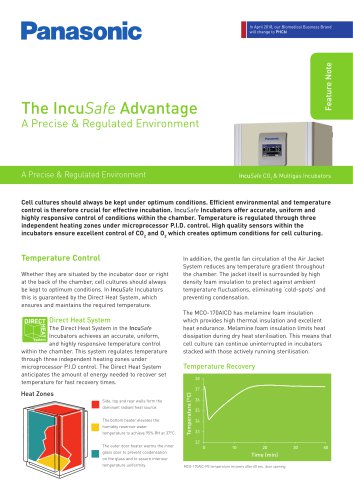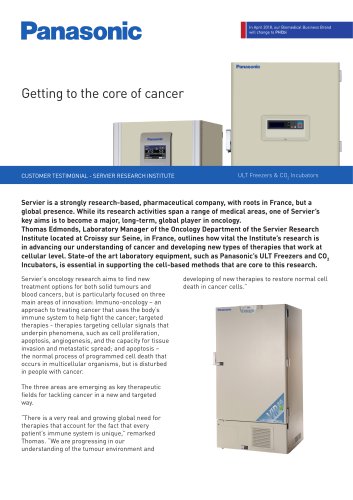 ウェブサイト:
PHC Europe B.V. / PHCbi
ウェブサイト:
PHC Europe B.V. / PHCbi
グループ: PHC Corporation
カタログの抜粋

APPLICATION NOTE Cleanrooms, GMPs and ISO Certification Recent successes in cell and immune-mediated therapies have accelerated the possibilities for cell-based therapies as a mainstream form of treatment across the globe.1 As stem cell research and regenerative medicine continue to gain clinical importance, the need for reproducibility, reliability and contamination-free performance of basic laboratory equipment is essential to the quality process. Laboratories and other settings that work with biologically relevant products require a clean and controlled environment to establish and maintain sample integrity. Contamination events cost both time and resources, leading to significant delays in research, as well as patients’ ability to receive therapeutic treatments.2 One of the most impactful precautions laboratories and clinical manufacturers can take in avoiding contamination is establishing and maintaining a cleanroom that meets Good Manufacturing Practice (GMP) guidelines. GMP regulations apply to all phases of cell collection, processing and storage.3 Threats to Cell Culture-Based Product Production Sterile or aseptic assurance is an important factor for manufacturing living cell/tissue products that cannot be sterilized. Initial cell and biological materials have inherent susceptibility to contamination from microorganisms and viral contaminants.4 Given that atmospheric air is laden with microparticles of a potentially infectious nature, maintaining a proper cleanroom environment with appropriate equipment minimizes the risk of potential stressors and exposure to contaminants.5 Cell culture contaminants can originate from other mammalian cells, microbial sources or can be from a non-living source. Any form of these contaminants present in cell cultures can adversely impact results, producing genetic instability, transformation, changes in normal physiological function and changes in viral susceptibility.6 Many contaminants can be detected in the early stages of culturing through visual cues, while other contaminants are more inconspicuous and difficult to identify. For example, microbe and mycoplasma contamination can be detected relatively easily, while contamination from viruses is more difficult to detect. In fact, viral contamination often does not present in overall morphological changes; rather, it manifests in DNA changes that cannot be visually discerned.7 Viral infection can originate from contaminated cell lines, contaminated raw materials or a GMP breakdown in the production and purification process.8 Primary contamination also presents the risk of cross-contamination to other products, creating an even greater loss of resources and time.
カタログの1ページ目を開く
Application Note I Cleanrooms, GMPs and ISO Certification What is a Cleanroom Classification? A cleanroom is a controlled environment where the concentration of airborne particles like dust, microbes and aerosol particles are controlled. Cleanrooms are maintained and utilized in a manner that minimizes the introduction, generation and retention of particles in the environment. All cleanrooms that meet the GMPs are classified according to the cleanliness level of the air inside them.9 Meeting requirements for cleanrooms is one of the most critical issues for laboratories adhering to GMP...
カタログの2ページ目を開く
Application Note I Cleanrooms, GMPs and ISO Certification Cleanroom Certified Equipment It is critical to maintain proper attire/gowning, furniture and equipment to minimize the risk of introducing particles and contaminants to cleanroom environments. Equipment not qualified for cleanroom settings can present a variety of hurdles in proper cleanroom maintenance. For example, uncertified tools and equipment with motors and other moving parts can introduce a reservoir of particles into the environment. Some essential tools and equipment are also supplied with engines and other devices that have...
カタログの3ページ目を開く
Application Note I Cleanrooms, GMPs and ISO Certification Testing Methodology Each unit has received the appropriate classification after undergoing the following testing methodology: 1. Testing was performed in a dynamic environmental chamber with defined air, temperature, and humidity conditions. PHC Europe offers a full product line that represents more than 50 years of innovation and successful application throughout the life science community. If you are developing GMP manufacturing, we can help. Contact your local PHCbi brand representative at www.phchd.com/eu/biomedical 2. The...
カタログの4ページ目を開くPHC Europe B.V. / PHCbiのすべてのカタログと技術パンフレット
-
ProteoSave™ Brochure
2 ページ
-
STEMFULL™ Brochure
2 ページ
-
iP-TEC® General Brochure
12 ページ
-
General Catalogue
60 ページ
-
Vaccine Storage E-Book
14 ページ
-
MPR-514(R)-PE
2 ページ
-
MPR-N450FHD-PE
2 ページ
-
PRIMESURFACE®
4 ページ
-
MPR-1014R-PE
2 ページ
-
TwinGuard
12 ページ
カタログアーカイブ
-
MDF-DU302VX-PE
2 ページ
-
Storage Solutions
7 ページ
-
MCO-19AIC(UV)-PE
6 ページ
-
MIR-H163-H263
2 ページ
-
MDF-U731M
2 ページ
-
MCO19-AIC/M Incubators
16 ページ
-
Twinguard
12 ページ
-
CardioHealth Station
6 ページ
-
MDF-U4186S-PE
2 ページ
-
MDF-U5386S-PE
2 ページ
-
MBR-705GR
2 ページ
-
CHS promotional
2 ページ
-
ULT VIP
12 ページ
-
KM-DU34H1E Flyer
2 ページ
-
MDF-C8V1-PE
2 ページ
-
MDF-U7386S-PE
2 ページ
-
MDF-U500VX
2 ページ
-
MDF-U33V
2 ページ
-
MDF-U4186S
2 ページ
-
MDF-U3386S-PE
2 ページ
-
MDF-U55V-PE
2 ページ
-
MDF-U74V
2 ページ
-
MDF-U700VX-PE
2 ページ
-
Eco VIP Freezer
2 ページ
-
Twin Guard Series
12 ページ







































